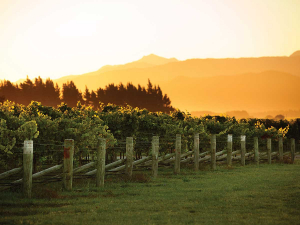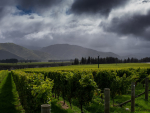Marlborough grape growers enjoyed a leap in yields and profits for the 2020 season, despite the complications of a Covid-19 harvest.
The 2020 Marlborough Vineyard Benchmarking report, which uses a 30-hectare vineyard model, indicates profits of $11,910 per hectare before tax, which is up 37 percent on 2019 and a 16 percent increase on the average profit from 2015 to 2019.
“The combination of the very dry weather right through harvest and low disease pressure, coupled with adequate irrigation for most vineyards, led to good yields of excellent quality fruit,” says the report, which was commissioned by New Zealand Winegrowers (NZW) and the Ministry for Primary Industries (MPI), and undertaken by Fruition Horticulture.
The model yield was 13.8 tonnes per hectare, up 10 percent on 2019 and 6 percent on the 2015 to 2019 average, while Sauvignon Blanc yield was 14.9 tonnes per hectare, 6 percent up on 2019, says the report. “The earlier flowering varieties Pinot Noir, Pinot Gris and Chardonnay rebounded after a poor year in 2019, up between 30 and 80 percent in comparison with 2019 due to greatly improved weather conditions for flowering and pollination.” Grape prices rose as well, with Sauvignon Blanc up 3 percent to $1,905 per tonne, which is 6 percent higher than the 2015 to 2019 average, says the report. “Prices edged higher due to increased sales and high demand for grapes.” Across all varieties, the model average grape price was $2,020 per tonne, up 4 percent on 2020 and 7 percent up on the five years previous.
Working expenses in the last year increased 2 percent on 2019, costing the model vineyard $12,455 per hectare, up 15 percent on the 2015 to 2019 average. Increases over the past five years have mainly been driven by increased wage rates, with the minimum wage increasing 20 percent between 2015 and 2019, while growers report a consequent increase in other wage rates, says the report. “Pest and disease control costs have also been increasing although fungicide inputs were able to be reduced in 2019/20 due to the very favourable, dry weather conditions.” Marlborough growers continued to invest in capital items during the season, including dams, tractors, machinery and utility vehicles, the report finds. “Some of the machinery purchased is specifically to reduce labour expenses such as three-row sprayers, mechanical pruners and vine strippers.”
The vineyard model for 2020 is based on production, income and expenditure information gleaned from 48 participating vineyards, with 12 in the Awatere Valley and 36 in the Wairau Valley, representing small, medium and large producers. Sauvignon Blanc is the dominant grape variety in the model, accounting for 80 percent of the producing area, followed by Pinot Noir, Chardonnay, and Pinot Gris.
As well as collecting data, the report’s authors talked to growers about their outlook, and found they were “cautiously optimistic” regarding the year ahead, with forecasts of a slightly lower crop in 2021. The Covid-19 pandemic has had a “significant influence” on morale, with half the group “very uncertain” about their businesses due to the pandemic’s potential effect on the wine supply-demand balance, labour availability and expenses. “Most of the rest were more positive, and with a good result in 2020 they still perceive a good future,” the report says. The authors say most surveyed growers were budgeting similar prices to 2020, and many were hoping for an increase to reflect climbing expenses. “Underlying industry confidence however is still positive underpinned by strong demand for Sauvignon Blanc.”





